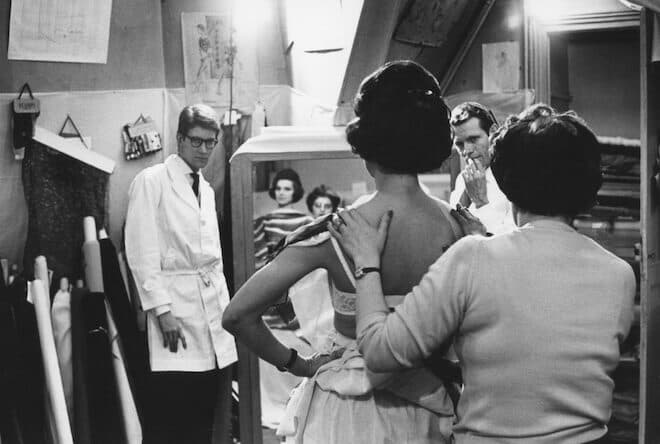#fashion #FHCM #Chanel #Dior #Fendi #Valentino
“Despite its rich heritage, haute couture is being modernized through the re-interpretation of its own definition” –Paul Ebeling
For more than a century, couture has been emblematic of the triumph of craftsmanship and fashion. It represents the fusion of fashion the modern entity that combines novelty and synergy with personal and social needs and craftsmanship the arts of dressmaking, tailoring, and crafts constituent to apparel and accessories.
With a minuscule client base (approximately 4,000 worldwide) and an exclusive allocation of industry tickets for runway presentations, the practice can seem entirely fanciful and out of reach. In truth, the art of couture is a tightly controlled, invite-only application, governed by Paris’ Fédération de la Haute Couture et de la Mode (FHCM) with widespread influence on the fashion industry at large. But despite being the most extravagant, glamorous and expensive form of fashion, haute couture has seen a rapid decline in interest in the last 7 yrs.
In Y 2021 alone, interest in “Couture” has steadily declined by 13%. In fact, only 4 of the Top 10 search queries related to “Haute Couture” are for actual collections: Chanel, Dior, Fendi, and Valentino. The idea of “glamour” itself has undoubtedly evolved with modernity.
Whereas glamour and luxury previously meant gowns, hand-made and embroidered with thousands of pearls, luxury today can be seen in the form of t-shirts, sneakers, and comically tiny handbags. So, rather than needing hundreds of thousands of dollars for a custom piece, consumers can buy into the luxury dream with a $400 T-shirt.
The Big Q: How does haute couture fit into today’s modern, technology-filled, inclusive-prioritized fashion landscape?
The Big A: the term haute couture has been building on its roots since the late 17th century. As France became synonymous with richly produced and innovative luxury silk textiles, the relationship between aristocratic and upper-class women and their personal dressmakers began to grow; and so too did the haute couture system.
Founded in Y 1868, the FHCM preserves the exacting standards of French fashion culture by presiding over Paris Women’s and Men’s Fashion Weeks, as well as endorsing and nurturing designers who exhibit a quality of craftsmanship that meets the level required to show on the official Haute Couture schedule.
Today, members are selected by the Chambre Syndicale de la Haute couture. To qualify as an official Haute Couture house, members must design made-to-order clothes for private clients, with more than one fitting, using an atelier that employs at least 15 full-time staff. They must also have 20 full-time technical workers in 1 of their workshops.
In today’s fast-paced, fast-fashion oriented world, where such a small percentage of the population has the wealth to buy Haute Couture its slow decline was imminent. Combine that with the rise of independent designers and the rising appreciation for more independent and exclusive designers, haute couture is prone to becoming the next big fashion faux pas.
Beyond the design shifts spurred by consumer demand, designers are modernising this niche fashion category by crossing into other areas of cultural interest like technology and art. We start seeing haute couture more as an art form and a way for designers to share their viewpoints and core beliefs. Dior’s Maria Grazia Chiuri addressed the current moment by taking inspiration from the work of Olesia Trofymenko, a Ukrainian artist whose favorite motif, the Tree Of Life, is a folkloric symbol of humanist hope inn cultures all over the world. Another example is Dior’s Spring 2020 couture collection, where creative director Maria Grazia Chiuri collaborated with the legendary feminist artist Judy Chicago. The show included an immersive space featuring banners emblazoned with questions around the show’s concept, “What If Women Ruled The World?”
Couture’s offering of distinction in design and technique remains a compelling force, one even more potent when much other quality has atrophied. It remains a discipline of ultimate imagination, unaccountable to cost, with the paradox of being the fashion most cognizant of its ideal clients. It is, as it began, a dream of quality in an era of industry and its succession.
Haute couture persists in providing us with a paragon of the most beautiful clothing that can be envisioned and made in any time and it is an industry that will only go onwards and upwards with time.
Have a prosperous day, Keep the Faith!









